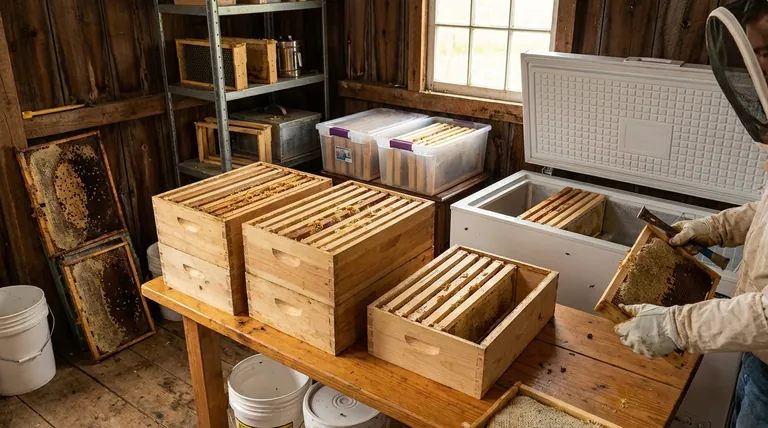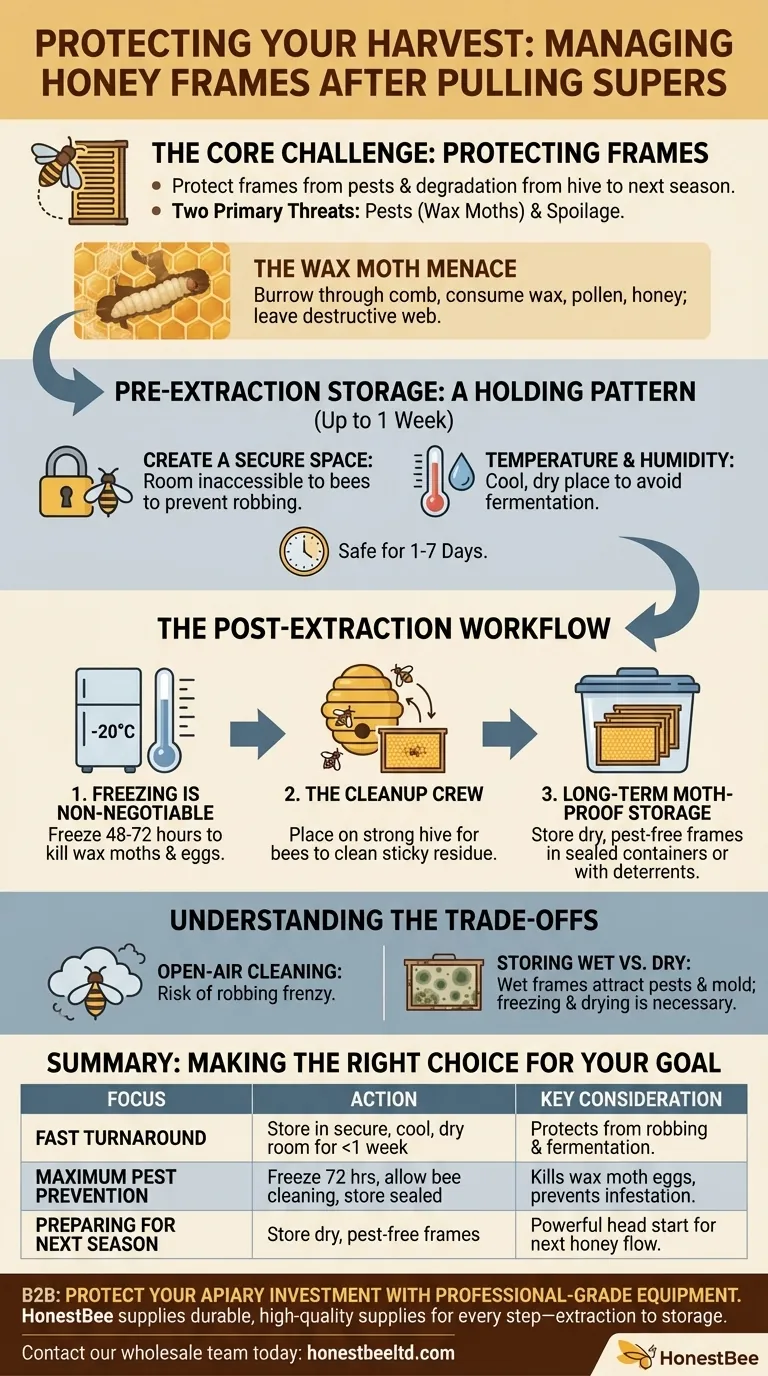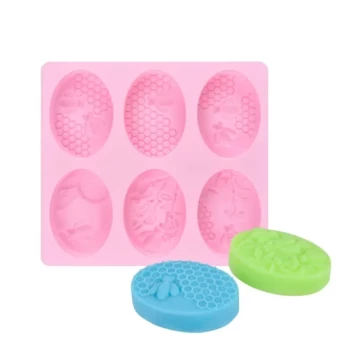If you cannot extract honey frames immediately after pulling them, they can be safely stored for a few days in a secure, climate-controlled room. The primary goal is to protect the frames from pests and prevent robbing by other bees while maintaining the quality of the honey.
The core challenge of honey harvesting is not just the extraction itself, but the entire workflow of protecting your frames—and the honey and comb they contain—from pests and degradation from the moment they leave the hive until they are ready for next season.

The Core Challenge: Protecting Your Harvest
Why Immediate Extraction Isn't Always Possible
Life and logistics often get in the way of the ideal beekeeping schedule. You might pull honey supers on a weekend but lack the time or equipment to extract until the following week. This delay is common and manageable.
The Two Primary Threats
Your two main adversaries during this waiting period are pests (primarily wax moths) and spoilage. Unprotected frames of honey are an irresistible target.
The Wax Moth Menace
Wax moths and their larvae are the single biggest threat to stored honeycomb. They burrow through the comb, consuming wax, pollen, and honey, leaving behind a destructive web of silk and debris.
Pre-Extraction Storage: A Holding Pattern
Creating a Secure Space
Your first step is to place the honey supers in a room that is completely inaccessible to bees. A single foraging bee that finds this treasure will quickly recruit others, leading to a frantic robbing event that is difficult to stop.
Temperature and Humidity
Store the frames in a cool, dry place. A warm, humid environment can increase the moisture content in the uncapped honey, raising the risk of fermentation.
How Long Can You Safely Wait?
Storing frames for a few days to a week under these secure conditions is generally safe. The longer you wait, however, the greater the risk that any existing wax moth eggs on the frames will hatch.
The Post-Extraction Workflow
After you extract the honey, the frames are still sticky with residue. These "wet" frames require proper processing before long-term storage.
Freezing is Non-Negotiable
Freezing is the most effective, chemical-free way to kill wax moths and their eggs. Place your extracted frames in a freezer for at least 48-72 hours. This step is critical for preventing an infestation during storage.
The Cleanup Crew: Letting Bees Do the Work
Many beekeepers place the frozen, extracted supers back on the hives. The bees will quickly clean up every last drop of remaining honey, leaving the frames "dry" and ready for storage.
Long-Term Moth-Proof Storage
Once the frames are cleaned and pest-free, store them in a way that prevents re-infestation. This can be done by stacking supers and sealing the top and bottom, or by storing frames in large, sealed plastic bags. Some beekeepers also use commercially available moth deterrents designed specifically for honeycomb.
Understanding the Trade-offs
The Risk of Open-Air Cleaning
Some beekeepers simply place wet supers outside for the bees to clean. While effective, this can easily incite a robbing frenzy among nearby hives, which is a significant risk to weaker colonies. Placing them directly back on a strong hive is the safer method.
Storing "Wet" vs. "Dry"
Storing wet frames without freezing or bee-cleaning is a recipe for disaster. They will attract pests, and the residual honey can ferment and grow mold, ruining the comb. The effort to freeze and dry the frames is a necessary investment.
Making the Right Choice for Your Goal
- If your primary focus is a fast turnaround before extraction: Store honey-filled supers for up to a week in a cool, dry, bee-proof room.
- If your primary focus is maximum pest prevention for long-term storage: Freeze extracted frames for 72 hours, allow bees to clean them dry on the hive, and then store them in a sealed, moth-proof container.
- If your primary focus is preparing for next season: After freezing and cleaning, properly stored dry frames will give you a powerful head start for the next honey flow.
Properly managing your frames through the entire harvest process protects your investment of time and ensures a healthy, productive apiary.
Summary Table:
| Step | Action | Key Consideration |
|---|---|---|
| Pre-Extraction | Store in a cool, dry, bee-proof room. | Protects from robbing and fermentation for a few days to a week. |
| Post-Extraction | Freeze frames for 48-72 hours. | Kills wax moth eggs and larvae to prevent infestation. |
| Cleaning | Place frozen frames on a strong hive for bees to clean. | Bees efficiently remove sticky residue, preparing frames for storage. |
| Long-Term Storage | Store dry frames in sealed containers or with moth deterrents. | Ensures pest-free comb for a head start next season. |
Protect Your Apiary Investment with Professional-Grade Equipment
Managing your harvest efficiently is key to a productive season. HONESTBEE supplies commercial apiaries and beekeeping equipment distributors with the durable, high-quality supplies needed to handle every step—from extraction to secure storage.
Let us help you streamline your operation with reliable equipment built for scale. Contact our wholesale team today to discuss your needs and ensure your frames—and your profits—are protected.
Visual Guide

Related Products
- Wooden Bee Hive Frames for Beekeeping and Wholesale
- Copper Bee Frame Eyelets for Beekeeping
- 24 Frame Honey Extractor Commercial Radial Honey Frame Extraction Machine
- Langstroth Honey Bee Box Hive Boxes for Different Depths
- Commercial 48-Frame Stainless Steel Honey Extractor
People Also Ask
- What are the primary uses of different Langstroth frame sizes? Optimize Your Hive for Health & Honey
- What color options are available for plastic frames, and what is the benefit of black frames? Boost Your Hive Inspection Efficiency
- When should bee frames be thrown away? A Beekeeper's Guide to Hive Health & Biosecurity
- What are the standard sizes of frames used in Langstroth hives? Choose the Right Frame for Your Apiary
- Will honey bees clean up old frames? A Guide to Safe and Efficient Frame Reuse



















